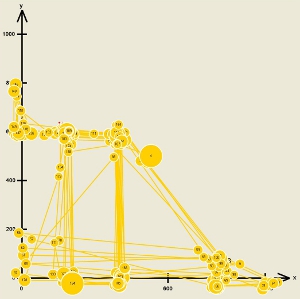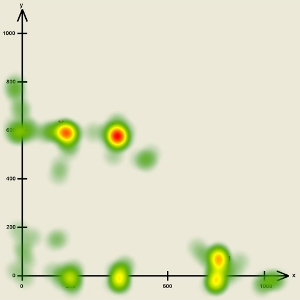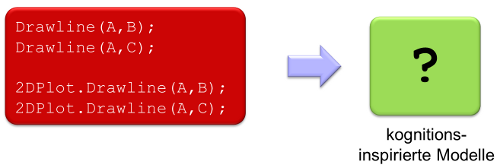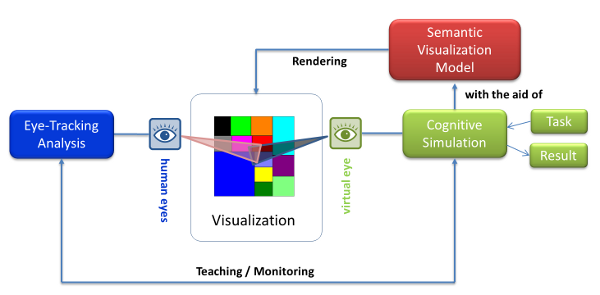Motivation
A few years ago most visualization techniques needed high performance computers. Due to the fast growth of processing power in PCs, PDAs, smartphones and cell phones, the visualization techniques are available for these devices. This progress leads to many new questions of usability and user-experience of computer interfaces and data visualization. Closely linked to usability are questions of cognitive processes, e.g. how human beings are deriving a principal idea of the information content of a presented diagram which only shows lines, symbols and other geometrical elements. If this “transportation process” of information content is designed optimally the user will correctly understand the meaning of the data presented in a very short period of time. Interesting issues arise: Do state of the art presentation techniques for information support the understanding process of the graphical output optimally? What are the main processes when human beings see diagrams, figures and general graphical outputs of software systems? Which algorithms can be used to model these processes? To study the interaction process between users and graphical output systems we will combine results and techniques from three projects:

Eye-Tracking Visualization
Eye-Tracking is the state of the art technique to evaluate HCI aspects. However, the number of visualization techniques for eye-tracking data is very little. Mainly heat-maps and scan-path visualization are used. One aim of our work is to enlarge this number with new presentation techniques based on the visual analytics paradigm.
 |
 |
|
|
Cognitive Inspired Visualization Models
Visualization today often uses OpenGL, DirectX, PreFuse or other rendering libraries. The usage of these techniques leads to a very technical perspective of visualization structures (parallels in HCI are the usage of GUI-designer tools). The cognitive understanding of visualization or GUIs does not only work with mental line-, pixel- or button-recognition functions. Humans use syntactical and semantic pattern recognition to find important GUI elements and to understand connections between presented graphical elements. Beside the study of cognitive recognition patterns, our work also leads to graphical ontologies, which we will use for the adaptation of visualization to users’ needs or preferences. Also, semantic models of visualization could lead to new rendering techniques which focus more on a cognitive inspired approach than on technically defined visualization elements.
 |
|
Cognitive Simulation
A cognitive simulation framework brings together eye-tracking results and semantic models of visualization. Eye-tracking is used to train the cognitive simulation; semantic models provide a “mental” database.
Our Interdisciplinary Approach
We think that our interdisciplinary approach will lead to a better understanding of cognitive processes of perception and understanding of geometric forms and thus to optimized graphical representations. Although we are mainly working in the domain of visualization, results of our approach can be applied to questions of usability in HCI.
 |
|

